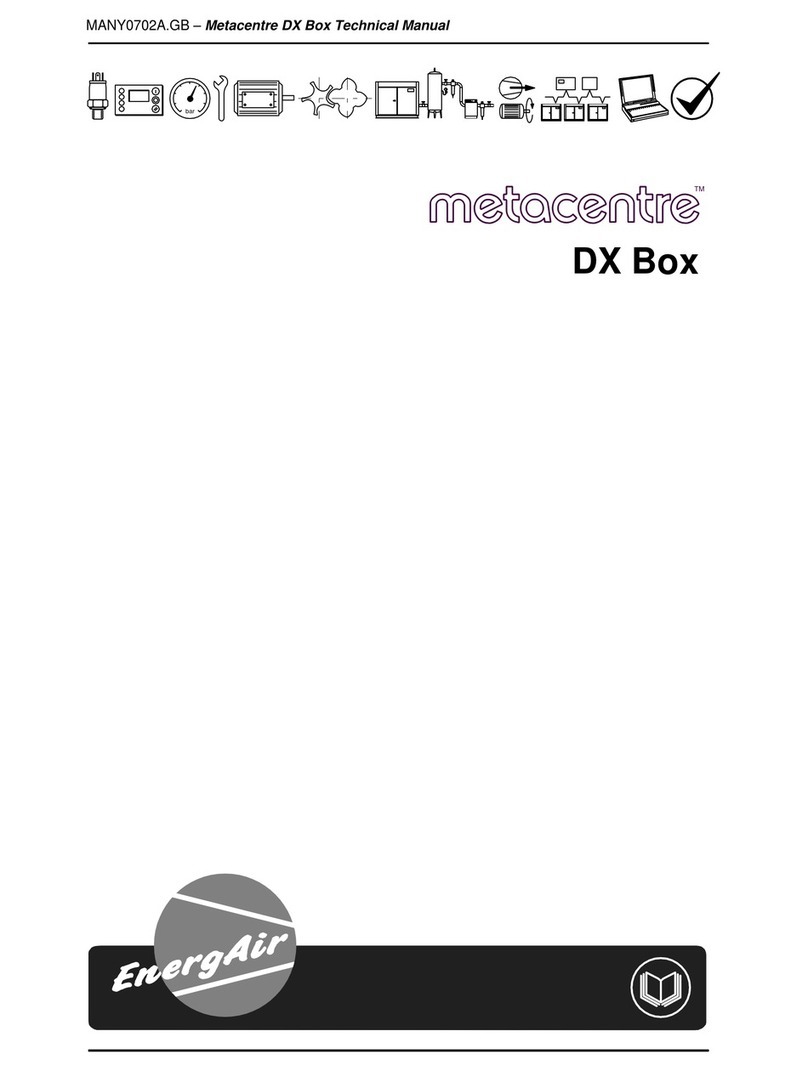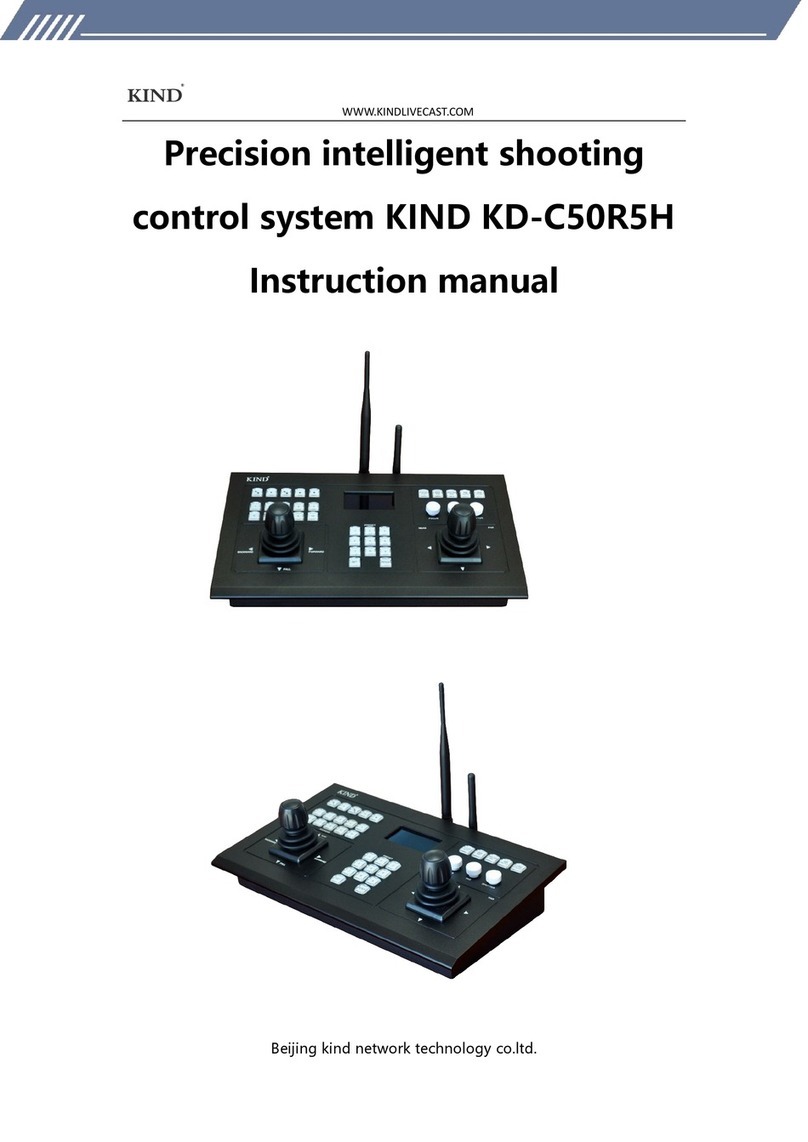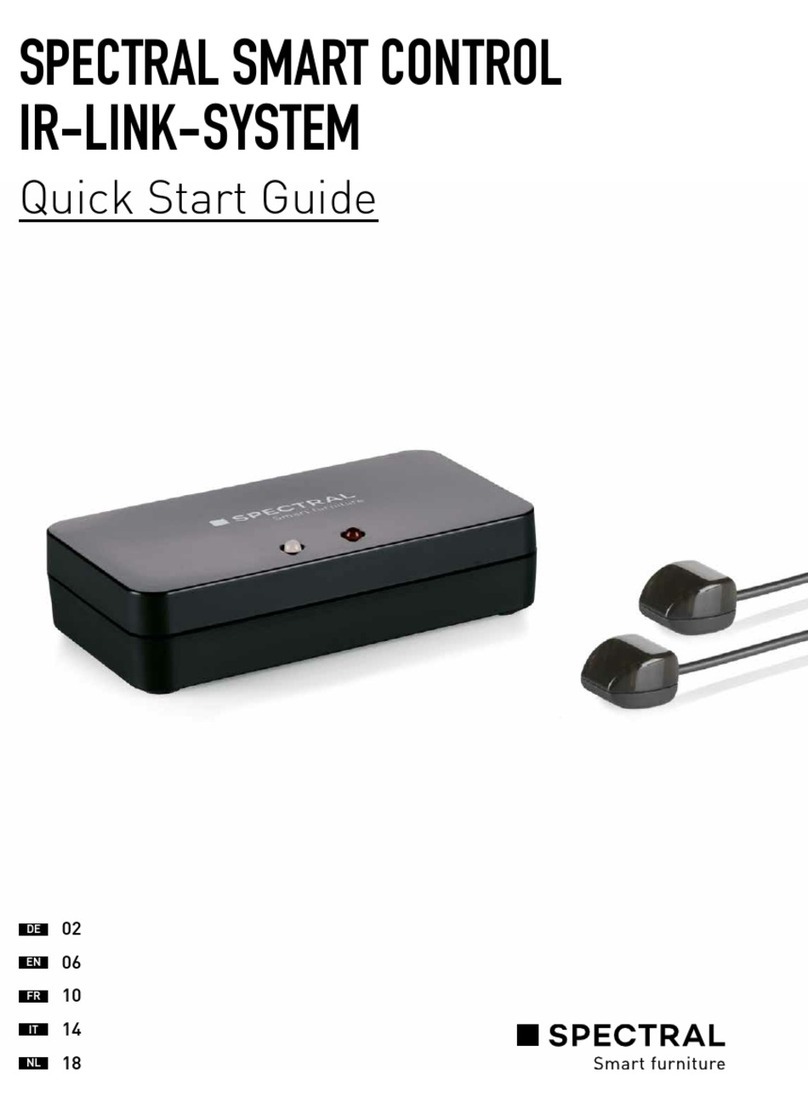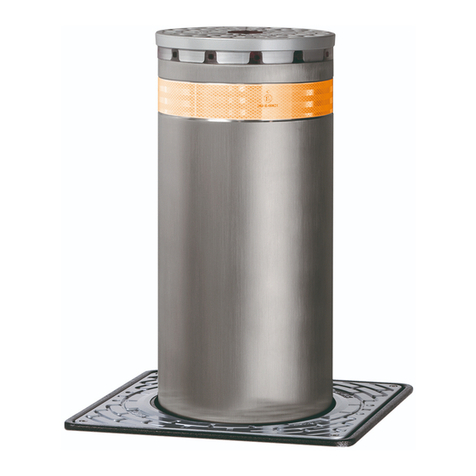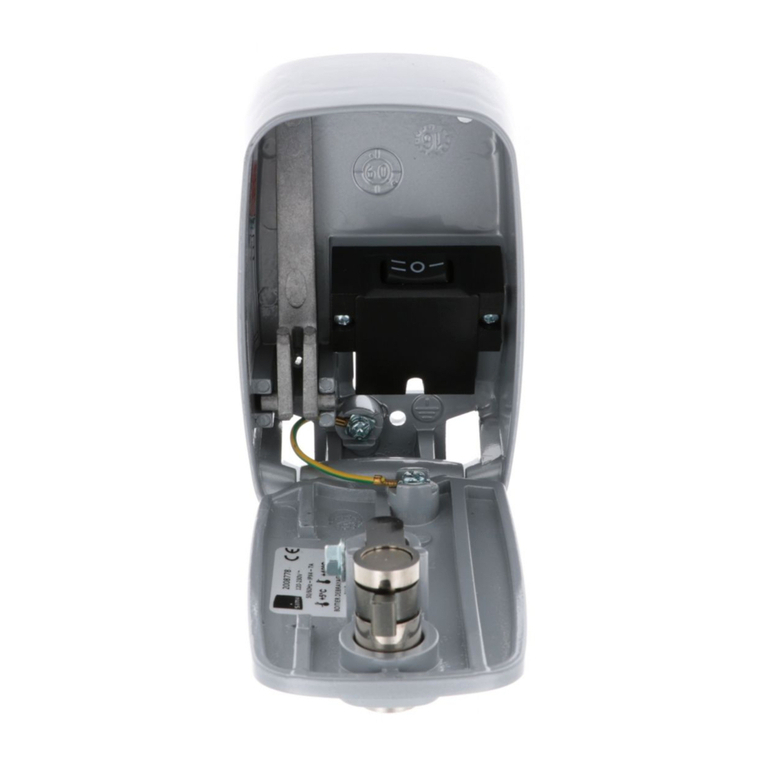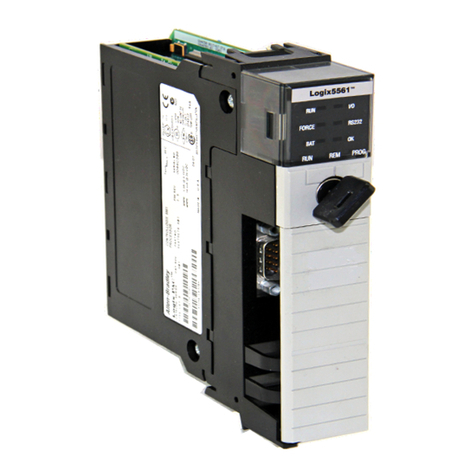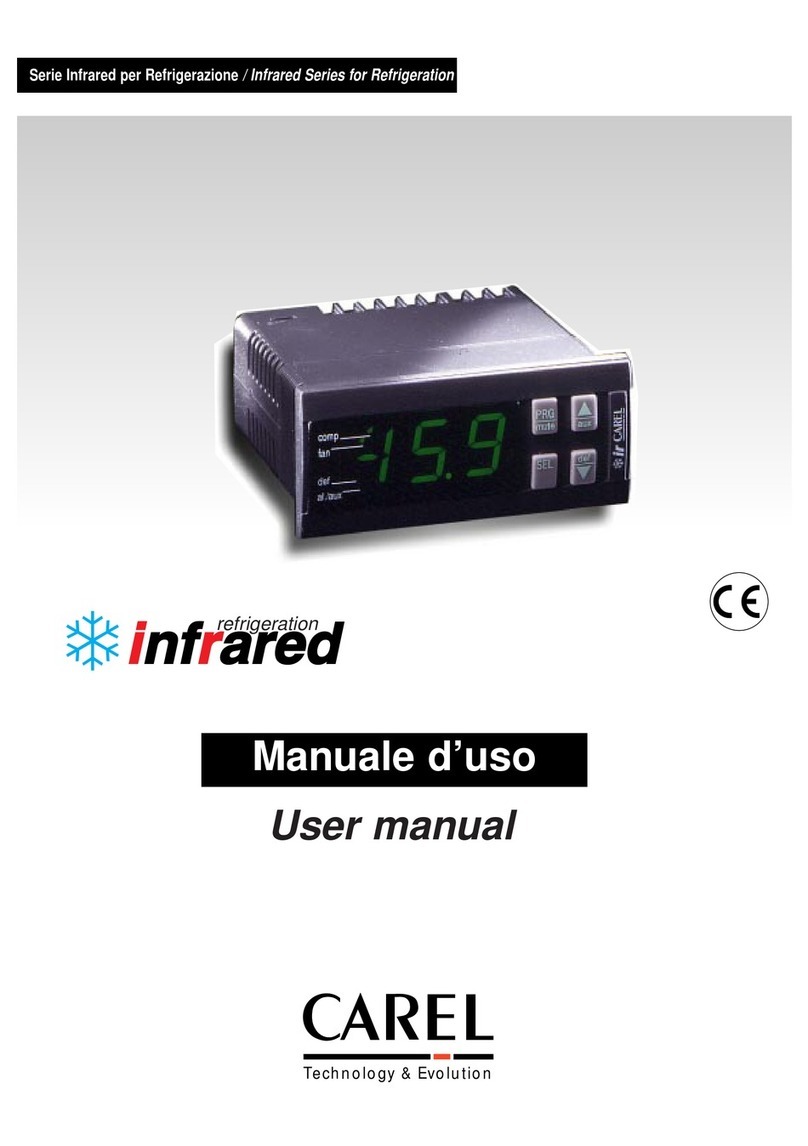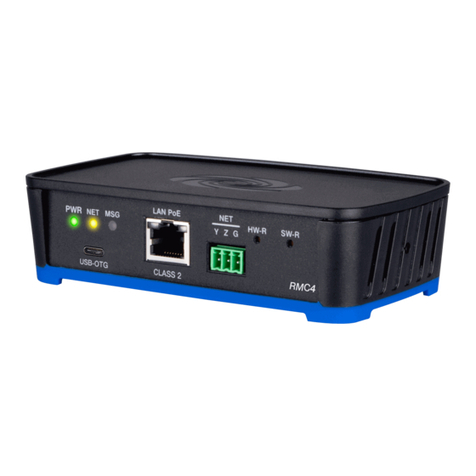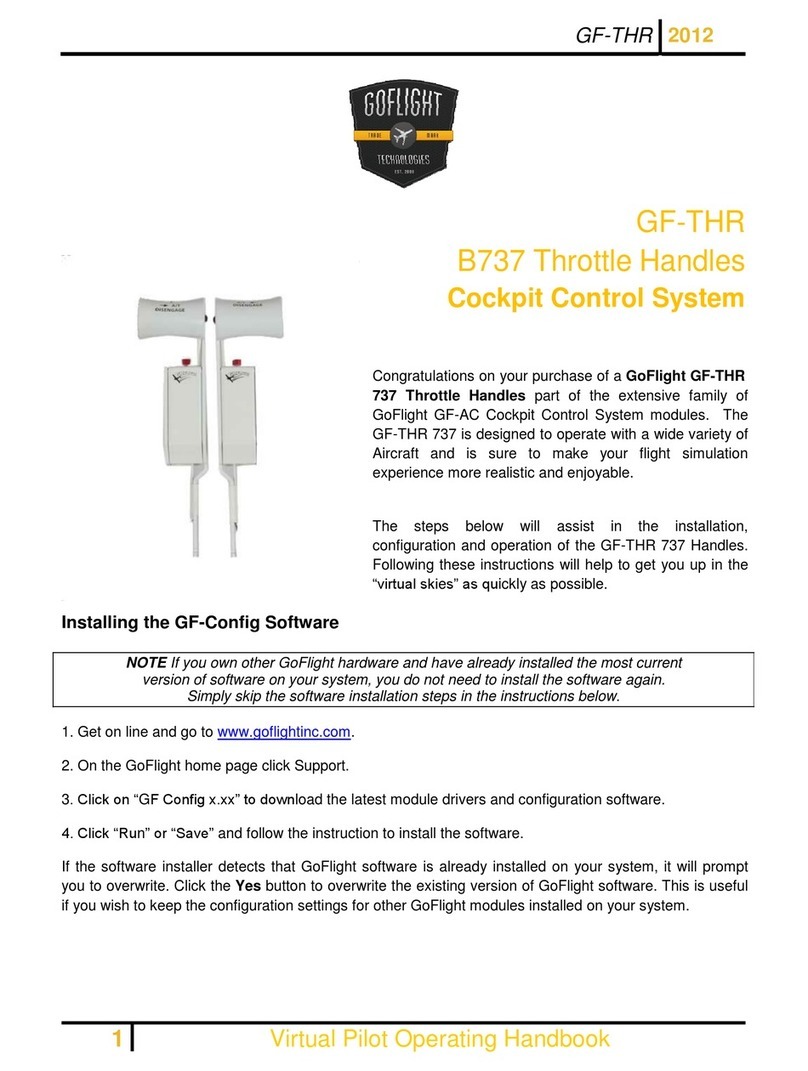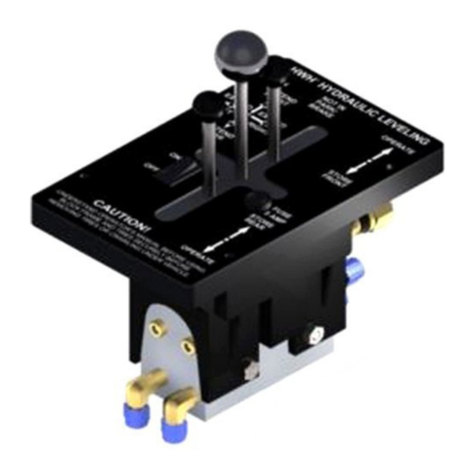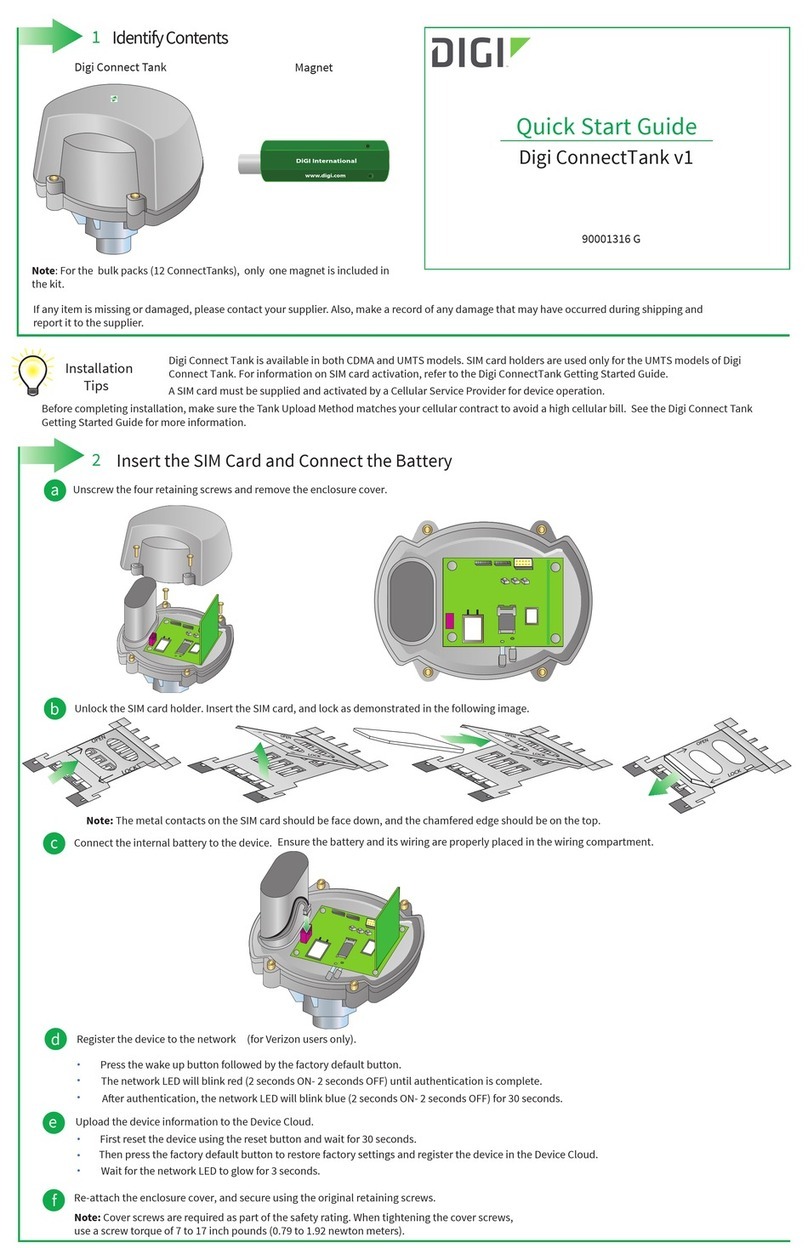EnergAir Metacentre User manual

MANY0703A.GB - Metacentre CX Box Technical Manual
TM
CX Box
bar

Metacentre CX Box
Page 1
Index
1.0 Safety Precautions
1.1 Installation
1.2 Operational
1.3 Maintenance and Repair
2.0 Introduction
2.1 Management System Connectivity
2.2 Interface Mode: Regulation Types
3.0 Installation
3.1 Unit Location
3.2 Power Supply
3.3 Delivery Pressure Sensor
3.4 Internal Pressure Sensor (Option)
3.5 System Pressure Sensor (Option)
3.6 Auxiliary Fault Input (Options)
3.7 Inhibit Function (Option)
3.8 Speed Monitoring Input (Option)
3.9 R2 – 24Vac Output (Option)
3.10 AR1/2 Auxiliary Output (Options)
3.11 Temperature Sensor (Options)
3.12 CX Extension Unit, A01 to A04
3.13 RS485 Network Connection
3.14 Compressor Interface PCB
4.0 Commissioning
4.1 Commissioning Procedure
4.2 Physical Checks
4.3 Management System
4.4 Delivery Pressure Sensor
4.5 Pressure Set Points
4.6 Regulation Mode
4.7 Optional Features and Functions
5.0 Menu Navigation
5.1 Menu Items
5.2 Diagnostics
6.0 Operation
6.1 User Interface
6.2 User Menu Items
6.3 Status
6.4 Active Functions
6.5 Compressor Identification
6.6 Operation
6.7 Power Failure Auto-Restart
6.8 Failure Modes
6.9 Compressor Shutdown (Trip)
6.10 Compressor Alarm (Warning)
6.11 Sensor Fault Levels
6.12 Sensor Fault
6.13 Fault Input (Options)
6.14 Fault Codes
7.0 Parts List
8.0 Technical Data
9.0 Connection Diagrams
10.0 Wiring Diagrams
Refere to Section Indicated
Note
Important or Caution, Safety

Technical Manual
Page 2
1. Safety Precautions
ALWAYS EMPLOY SAFE WORKING
PRACTISE AND PROCEDURES
WARNING:
Risk of Danger
WARNING:
Risk of Electric Shock
WARNING:
Risk of High Pressure
WARNING:
Consult Manual
When installing, commissioning, operating or
carrying out service or maintenance on a product,
personnel must use safe working practise and
observe all relevant local health and safety
requirements and regulations. Attention of users in
the UK is drawn to the Health and Safety at Work
Act, 1974, and to the Regulations and
Recommendations of the Institution of Electrical
Engineers (IEE).
Lethal voltages are used within the product. Use
extreme caution when carrying out electrical checks.
Isolate the power supply before starting any
maintenance work.
It is not possible to anticipate every circumstance
that might represent a potential hazard. If the user
employs an operating procedure, an item of
equipment or a method of working which is not
specifically recommended the user must ensure the
product will not be damaged or made unsafe and
that there is no risk to persons or property. Failure to
observe safety precautions or implement safe
working practises may be considered dangerous
practice or misuse of the product.
1.2 Installation
Installation work must only be carried out by a
competent person under qualified supervision.
A fused isolation switch must be fitted between the
main power supply and the product.
The product should be mounted in such a location
as to allow operational and maintenance access
without obstruction or hazard and to allow clear
visibility of indicators at all times.
If raised platforms are required to provide access to
the product they must not interfere with normal
operation or obstruct access. Platforms and stairs
should be of grid or plate construction with safety
rails on all open sides.
1.3 Operation
The product must only be operated by competent
personnel under qualified supervision.
Never remove or tamper with safety devices, guards
or insulation materials fitted to the unit.
The product must only be operated at the supply
voltage and frequency for which it is designed.
When mains power is switched on, lethal voltages
are present in the electrical circuits and extreme
caution must be exercised whenever it is necessary
to carry out any work on the unit.
Do not open access panels or touch electrical
components while voltage is applied unless it is
necessary for measurements, tests or adjustments.
This work must only be carried out by a qualified
electrician or technician equipped with the correct
tools and appropriate protection against electrical
hazards.
All air compressors and/or other machine equipment
connected too, and controlled by, the product should
have a warning sign attached stating ‘THIS UNIT
MAY START WITHOUT WARNING' next to the
display panel.
If an air compressor and/or other machine
equipment connected too, and controlled by, the
product is to be started remotely, attach warning
signs to the machine stating ‘THIS UNIT CAN BE
STARTED REMOTELY’ in a prominent location,
one on the outside of the machine, the other inside
the machine control compartment.
1.3 Service Maintenance and Repair
Service, maintenance, repairs or modifications must
only be carried out by competent personnel under
qualified supervision.
If replacement parts are required use only genuine
parts from the original equipment manufacturer, or
an alternative approved source.
Carry out the following operations before opening or
removing any access panels or carrying out any
work on the product :-
• Isolate from the main electrical power supply.
Lock the isolator in the 'OFF' position and
remove the fuses.
• Attach a label to the isolator switch and to the
product stating ‘WORK IN PROGRESS - DO
NOT APPLY VOLTAGE'. Do not switch on
electrical power or attempt to start the unit if
such a warning label is attached.
Ensure that all instructions concerning operation
and maintenance are strictly followed and that the
complete product, with all accessories and safety
devices, is kept in good working order.
The accuracy of sensor devices must be checked
on a regular basis. They must be renewed when
acceptable tolerances are exceeded. Always ensure
any pressure within a compressed air system is
safely vented to atmosphere before attempting to
remove or install a sensor device.
The product must only be cleaned with a damp
cloth, using mild detergents if necessary. Avoid the
use of any substances containing corrosive acids or
alkalis.
Do not paint the control facial or obscure any
indications, controls, instructions or warnings.

Metacentre CX Box
Page 3
2. INTRODUCTION
The CX Box is intended as an advanced
compressor interface unit with inherent
functionality for monitoring and regulation of a
compressor that is equipped with a compatible
variable output regulation system.
PD
DP
PS
The CX Box provides optional ‘local pressure
sensor’ connections. The compressor delivery
pressure (PD), local system pressure (PS) and
air treatment differential pressure (DP) can be
monitored and displayed. The detected local
pressure (delivery or system) is available on
the system network and can be utilised by a
management system unit for advanced
pressure related functions. A local air
treatment differential pressure alarm can also
be implemented.
PI
PD
The CX provides ‘Internal’ reclaimer vessel, or
sump, pressure detection. The differential
pressure between the internal pressure (PI)
and delivery pressure (PD) can be monitored
and displayed. An internal air/oil filtration
differential pressure alarm, and excessive
internal pressure alarm, can be implemented.
The CX Box is equipped with several digital
(remote volt-free contact) and analogue
temperature/pressure inputs. Each can be set
to monitor and display status or value with the
option to respond with an Alarm(Warning) or
Trip(Shutdown) condition. With the addition of
the optional CX Expansion Box, additional
digital and analogue inputs can be made
available.
The CX Box is equipped with a ‘compressor
control mode’. This mode enables total control
and monitoring (including Star/Delta motor,
Fan and Load solenoid control) of a
compressor unit that is not equipped with it’s
own control system.
2.1 Management System Connectivity
CX Box
The CX Box connects to a Management
System using an industrial two wire RS485
data network (Multi485).
2.2 Interface Mode: Regulation Types
The CX Box provides advanced monitoring
and control functionality for the following
compressor types:
Load/Unload (L mode)
For a compressor equipped with single
pressure switch, or remote load/unload digital
input, regulation.
3-Step (3S mode)
For a 3-step reciprocating type compressor
fitted with two pressure switches.
5-Step (5S mode)
For a 5-step reciprocating type compressor
fitted with four pressure switches.
Poppet Valve (V mode)
Rotary Screw; where each valve can be
energised from a volt-free relay contact.
The CX Box can accommodate 2 valve, 3
valve and 4 valve regulation systems.
Modulation Valve (AR mode)
Rotary Screw or Vane; where the modulation
valve can be controlled with the use of a 4-
20mA proportional pressure regulation valve.
Spiral Valve (AR mode)
Rotary Screw; where a pressure activated
spiral valve can be controlled with the use of a
4-20mA proportional pressure regulation
valve.
Variable Speed Inverter Drive (AR mode)
Inverter Drive; where the inverter drive can be
regulated from a 4-20mA signal.

Technical Manual
Page 4
3. Installation
It is recommended that installation and
commissioning be carried out by an authorised
and trained product supplier.
3.1 Unit Location
The CX is wall mounting using conventional
screw fixings. The CX can be located remote
from the compressor but within 10 m (33ft)
cable length from the compressor and within
100 m (330ft) cable length from the system
pressure sensor.
3.2 Power Supply
A fused switching isolator must be installed to
the main incoming power supply, external to
the CX. The isolator must be fitted with a fuse
of the correct rating to provide adequate
protection to the power supply cable used (in
accordance with local electrical and safety
regulations).
1
VOLTAGE SELECT
234
X04
1
VOLTAGE SELECT
234
X04
230Vac
115Vac
EE
N
L
LNE
X01
1234
XPM-TAC24
Check the input voltage select links on the CX
power supply PCB (XPM-TAC24).
Adjust if necessary before applying power.
3.3 Delivery Pressure Sensor
The compressor delivery pressure sensor (Pd)
must be located in a position suitable to be
able to continuously detect the delivery
pressure of the compressor package; prior to
any external air treatment, non-return valve or
isolation valve.
Pd
NRV
The delivery pressure sensor is a
mandatory CX Box requirement.
The pressure sensor must be connected to
terminal X07 of the CX using an earth
screened, two-core (0.5mm2CSA minimum),
cable no greater than (10m) 33ft in length.
X07
26
25 +
-
+
-
Pd
Pd
100m
(330ft)
max
Wire polarity is important
3.4 Internal Pressure Sensor (option)
The compressor internal pressure sensor (PI)
must be located internal to the compressor in
a position that will detect internal, or sump,
pressure prior to air/oil filter separation and
minimum pressure valve.
PI
PD
The internal pressure sensor is optional.
The pressure sensor must be connected to
terminal X07 of the CX using an earth
screened, two-core (0.5mm2CSA minimum),
cable no greater than (10m) 33ft in length.
X07
+
-
+
-
PI
10m
(33ft)
max
30
29
PI
Wire polarity is important
Internal Pressure Sensor

Metacentre CX Box
Page 5
3.5 System Pressure Sensor (option)
The system pressure sensor (PS) must be
located in a position that is downstream of any
air treatment associated with the compressor
and is common to the air system network.
Pd
DP
PS
The system pressure sensor is optional.
The pressure sensor must be connected to
terminal X07 of the CX using an earth
screened, two-core (0.5mm2CSA minimum),
cable no greater than (10m) 33ft in length.
X07
28
27 +
-
+
-
PS
PS
10m
(33ft)
max
Wire polarity is important
System Pressure Sensor
3.6 Auxiliary Fault Inputs (option)
Aux Fault #3
X05
20
22
19
21
18
17
Aux Fault #2
Aux Fault #1
F1
F2
F3
Fault Inputs
3.7 Inhibit Function (option)
14
16
X04
13
15 Inhibit
IH
Inhibit Function
3.8 Speed Monitoring Input (Option)
Only applicable in ‘L’ load/unload mode;
ignored in all other control modes.
The CX Box is equipped with a ‘speed
detection’ input designed to function with a
‘VSD Speed Monitoring Kit’ (available
separately). This optional feature is intended
for use when the CX Box is utilised for
frequency inverter drive variable speed
control. The feature will provide a percentage
speed/output display and all required
functionality to enable total synergy with the
energy control, VSD compressor aware,
functions of a management system equipped
with this capability.
14
16
X04
13
15 +rpm
3.9 R2 - 24Vac Output (option)
Output R2 is 24Vac and must be connected to
the coil of a 24Vac relay to provide a remote
volt-free output function contact.
S02-RT = ‘L’ (load/unload regulation Mode)
R2 = Fan Function
Menu Items; ‘Fan’ Function, AR1/2
S02-RT = ‘AR’ (load/unload regulation Mode)
R2 = Active Function
Menu Items; ‘Active’ Function, AR1/2
S02-RT = ‘3S’, ‘5S’ or ‘V’ regulation modes:
R2 is used for regulation control dependant of
regulation mode type.
3.10 AR1/2 Auxiliary Outputs (option)
31323334
X08
X09
R5
R6
AR2
AR1
Volt-free relay contact outputs
CE: 240V, UL 115V @ 4A maximum).
Menu Items, AR1/2 Functions

Technical Manual
Page 6
3.11 Temperature Sensor (options)
Connections for temperature sensor T1 to T4
options are located on the XPM-Ai4 module
that is mounted inside the CX Box unit.
Connect the temperature sensor(s) wires
directly to XPM-Ai4 module terminal X03.
X03
Ai3
Ai2
0VDC
Ai1
0VDC
Ai4
0VDC
1
2
3
4
5
6
7
8
T1
T2
T3
T4
XPM
Ai4 #1
0VDC
10m (33ft) max
Temperature Sensor Functions
The XPM-Ai4 module is equipped with ACM
(Analogue Conditioning Modules: hardware
PCB) designed for ‘KTY 6’ type temperature
sensors. For other types of temperature
sensor the ACM module must be changed to
suit the sensor type.
3.11.1 ACM (Analogue Conditioning Module)
The electrical input
characteristics of the four
adjustable temperature
inputs (T01 to T04) can be
individually altered to
different types of
temperature sensor using
ACM devices.
ACM devices are hardware modules that
plug in to the analogue input circuit and
condition the incoming signal.
For a particular temperature sensor type the
correct ACM device must be selected and
fitted.
1
2
34
43 1
X04
XPM-Ai4
XPM-Ai4
1234
X01 X02 X03
X04
ACM
XPM-Ai4
134
432
Ai1 Ai2
Ai1
Ai2Ai3Ai4
12345678
Ai1
Ai2Ai3Ai4
XPM-Ai4
X03
T01
T02T03T04

Metacentre CX Box
Page 7
3.11.2 To change an ACM device:
Remove the power from the unit.
ACM devices for temperature sensor inputs
T1 to T4 are located within the unit’s XPM-
Ai4 module.
To gain access to the ACM devices remove
the cover of the XPM-Ai4 module. The ACM
devices can be removed and inserted by
hand without the use of a tool.
To remove an ACM device:
2
1
Never use a metallic tool (screwdriver tip
for example) to remove an ACM device.
To install an ACM device:
Before inserting an ACM device check the
pins of the ACM and the XPM-Ai4 socket.
1 2 3
4
ACM devices are designed to mount in the
XPM-Ai4 socket at an angle. This is intended
to retain the device securely in the socket in
the instance of mechanical vibration.
Antistatic Precaution
ACM devices contain electronic components;
take all necessary antistatic precautions
including:
1) Before handling an ACM device
touch an exposed earthed surface to
discharge any body static.
2) Always store in an anti-static
container or package; never place
on a non anti-static surface.
3) Handle the device by the edges;
never touch the electronic
components on the device.

Technical Manual
Page 8
3.11.3 ACM Identification
#ACM devices are classified by a number
and can be readily identified by colour:
ACM types 5 to 8 can be fitted to a
temperature sensor input socket. ACM
devices can be fitted in the XPM-Ai4 module
in any required combination.
Do not use ACM types 1 to 5 for
temperature sensor inputs.
Example: for temperature input 1 (Ai1):
1
2
34 #
Ai4 Ai3 Ai2 Ai1
ACM
When an ACM device is fitted the ‘AM:
ACM Type’ menu setting for the temperature
sensor input must be adjusted to match the
ACM type number.
Menus: T01 to T04
Temperature Sensor
5: KTY KTY
5: RTD RTD
6: PT1 PT100
7: PTk PT1000
8: NTC NTC 10k
5
6
7
8
ACM
X03
1
2
T01
1
2
34
1
#
#
2
3
4
XPM-Ai4 Ai4 Ai3 Ai2 Ai1
ACM
COPPER
RED (Blue)
GREEN (Blue)
BLUE (Blue)
1
2
1
2
1
2
1
2
T04 T03 T02 T01

Metacentre CX Box
Page 9
3.12 CX Extension Unit A01 to A04
The CX Extension unit is equipped with an
XPM-Ai4#2 module with four ‘mA’ type inputs.
As standard the XPM-Ai4#2 module is fitted
with type 3 ACM’s. In some instances it may
be necessary to fit a type 4 ‘mA’ ACM module
where the sensor device is ‘earth’ referenced
and the ‘mA’ signal is detected on the +24VDC
power supply wire.
The location of ACM devices within the
XPMAi4#2 module is identical to the main CX
Box XPM-Ai4 module (see: 4.11).
Only ACM type 3 (20mA active) or type 4
(20mA passive) can be fitted to a CX
Extension XPM-Ai4#2 module. (see 4.11 for
ACM removal and insertion).
ACM
X03
A01
1
2
34
1
#
#
2
3
4
Ai4 Ai3 Ai2 Ai1
ACM
A04 A03 A02 A01
3: 0mA 0-20mA
+24VDC
3: 4mA 4-20mA
+24VDC
4: 0mA 0-20mA
4: 4mA 4-20mA
3
4
32
31
32
31
32
31
32
31
GREEN
BLUE
XPM-Ai4 #2
A GND
32
31
+V +
-
32
31
+V
+
0V
32
31
+V +
-
34

Technical Manual
Page 10
3.13RS485 Network Connection
The CX Box is intended to operate as part of a
management system.
CX Box
Connection to the management unit network is
two-wire, twisted pair, earth shielded RS485
data cable. Connect the RS485 data cable
wires to terminal X07 located on the rear of the
CX Box ‘S1’ main controller.
L2
L1
X07
L2
L1
Polarity is important.
The maximum ‘total’ network cable length is
1250m (4000 ft).
RS485 data communications and other
low voltage signals can be subject to electrical
interference. This potential can result in
intermittent malfunction or anomaly that is
difficult to diagnose. To avoid this possibility
always use earth shielded cables, securely
bonded to a known good earth at one end. In
addition, give careful consideration to cable
routing during installation.
1) Never route an RS485 data
communications or low voltage signal cable
alongside a high voltage 3-phase power
supply cable. If it is necessary to cross the
path of a power supply cable(s), always cross
at a right angle.
2) If it is necessary to follow the route of power
supply cables for a short distance (for
example: from a compressor unit to a wall
along a suspended cable tray) attach the
RS485 or signal cable on the outside of an
earthed cable tray such that the cable tray
forms an earthed electrical interference shield.
3) Where possible, never route an RS485 or
signal cable near to equipment or devices that
may be a source of electrical interference (for
example: 3-phase power supply transformer,
high voltage switchgear unit, frequency
inverter drive module, radio

Metacentre CX Box
Page 11
3.14 Compressor Interface PCB
The ‘i-PCB’ is designed to interface a
compressor with the CX using a 6-core, earth
shielded, cable no greater than 100m (330ft)
in length.
Each compressor in the system must be
assigned a unique identification number from
1 up to the number of compressors in the
system. The identification number should be
clearly indicated on each compressor for
operational reference.
For each compressor connected to the CX
utilising an ‘i-PCB,’ the signal wires must be
connected to the CX terminals dedicated for
the assigned compressor reference number.
i-PCB
LED 1 LED 2
C01 C02 C04
C03
246135
X01
24613 5
#1
C05
The ‘i-PCB’ is a DIN rail mountable module
designed to be installed within the compressor
control or switchgear area.
Each air compressor must be equipped with a
load/unload regulation system and, if not
regulated with a single electro-mechanical
pressure switch, have a facility for a remote
load/unload control with the ability to accept a
volt-free switching contact input for remote
load/unload.
Consult the air compressor manual or your
air compressor supplier/specialist for details
before installing the CX.
The ‘i-PCB’ uses a 12V to 250V input voltage
detection system and universal relay contact
control outputs (240V ‘CE’ / 115V ‘UL’ @ 5A
maximum). Integrated directly into the circuits
of an air compressor, the ‘i-PCB’ avoids the
need for additional relays or remote inputs.
The ‘i-PCB’ also acts as an electrical barrier
between the compressor and the CX providing
protection and voltage isolation.
4.14.1 Input Functions
The ‘i-PCB’ is fitted with a six-pin terminal C04
for compressor monitoring. The ‘i-PCB’ uses
two inputs (Ready and Run) to determine
compressor status. An Alarm input can be
used if compressor alarm indication is
available and required. The Alarm input is
optional and is not necessary for system
operation.
Ready Input:
The ‘Ready’ connection is intended to indicate
that the compressor is in a ‘started’ state, has
no operational inhibiting fault condition and is
ready to respond to CX regulation without
manual intervention.
0V
+V
READY LAMP
RUN READY
ALARM C04
The READY input will accept 12V to 250V ac
(50/60Hz) or dc.
Do not connect a voltage greater than
250Vac/dc to this input.
This input must be connected to the terminals
of a ‘ready’ or ‘operational’ lamp, or other
circuit of the compressor control system, that
will be energised when the compressor is in a
started (standby or running) condition.
The voltage to this input must de-energise
when the compressor is stopped and
unavailable to produce air upon a load signal,
or the Emergency Stop button is pressed, or
when the compressor experiences a fault that
prevents the compressor from running.

Technical Manual
Page 12
When the compressor ready lamp, or other
control circuit, is energised the ‘i-PCB’ will
detect the voltage and signal the CX that the
compressor is ready and available to load and
produce air when a load request signal is
given.
The ‘i-PCB’ input common terminal must
always be connected to the neutral, common
or 0V line of the applied input voltage.
Ready Input, Alternative Connection Method:
In instances where a convenient voltage signal
for a compressor ready condition is not
available the ‘Ready’ input can be connected
directly to a constant compressor control
system power supply voltage (12V to 250Vac
or dc). This will signal the CX that the
compressor is ready and available at all times
when power is applied to the compressor. The
CX has a built-in function to determine when a
compressor is not responding, or is in a
shutdown condition, regardless of a constant
ready signal. If the CX requests a compressor
to run/load, but fails to detect a RUN signal
within 60 seconds, the CX will regard the
compressor as ‘not ready’ and indicate the
compressor as not available. If a RUN signal
is detected at any time, the CX will
automatically reset the compressor ‘not ready’
condition and re-establish control.
F1
+Vac
0Vac
READY
Never connect the READY input positive
connection directly to the output of a control
system transformer, always connect after a
fuse or circuit breaker.
If a normally closed contact of an Emergency
Stop button is included in the compressor
power supply circuit, connect after the
Emergency Stop button contacts. This will
instantly indicate a compressor ‘not ready’
condition if the Emergency Stop button is
activated.
Run Input:
0V
RUN READY
ALARM
+V
MAIN (LINE) CONTACTOR
C04
The RUN input will accept 12V to 250V ac
(50/60Hz) only (DC cannot be used).
Do not connect a voltage greater than
250V to this input.
12V to 250Vac must be applied to the ‘Run’
terminals when the compressor motor is
running.
This input can be connected to the control
terminals A1 and A2 (coil) of the main starter
contactor of the compressor. When the
compressor control system energises the main
contactor, the ‘i-PCB’ will detect the voltage
across the contactor coil terminals and signal
the CX that the compressor is running.
Alternatively, if the main contactor coil voltage
is greater than 250Vac, a contactor auxiliary
switch can be used to apply a suitable voltage
to the ‘Run’ input terminals.
0V
+V
MAIN (LINE) CONTACTOR
0V
+V
AUXILIARY SWITCH
RUN READY
ALARM C04
In instances where a motor starter contactor is
not available or accessible, any part of a
compressor control circuit that is energised
when the compressor is running can be
monitored. For example: fan contactor or
voltage signal to a remote starter.

Metacentre CX Box
Page 13
The ‘i-PCB’ input common terminal must
always be connected to the neutral, common
or 0V line of the applied input voltage.
Alarm Input (optional):
The ‘i-PCB’ is equipped with an alarm (or
warning) input that can be used to detect
alarm or warning conditions.
A fault, that stops the compressor, and/or
prevents the compressor from running, is
determined from the ‘Run’ and ‘Ready’ inputs;
Alarm detection is optional and is not a
requirement.
Alarm Run Ready
Alarm Lamp 0V
+V
C04
The Alarm input will accept 12V to 250V ac
(50/60Hz) or dc.
Do not connect a voltage greater than
250Vac/dc to this input.
This input can be connected to the terminals of
an alarm lamp or other accessible part of the
control circuit that is energised when the
compressor is in an alarm condition.
If an alarm condition is experienced the
compressor alarm lamp, or alarm circuit, will
energise. The ‘i-PCB’ will detect the voltage
and signal the CX that an alarm has occurred.
If the compressor has no accessible alarm
circuit, or this function is not required, the ‘i-
PCB’ alarm terminals can be ignored.
The ‘i-PCB’ input common terminal must
always be connected to the neutral, common
or 0V line of the applied input voltage.
4.14.2 Output Functions
The CX will control the ‘i-PCB’ load/unload
relay outputs in accordance with the active
system load and unload pressure set points.
The ‘i-PCB’ load/unload relay contacts can be
used for compressor controllers that have
‘pressure switch’ load/unload regulation.
‘i-PCB’ Internal Output Circuits
OUT
NO
IN
NO
OUT
NC IN
NC
IN
C
Load
C
Seq
SEQ
Relay
1&2
LOAD
Relay
3
OUT
C
+20VDI2DI1GND
LOAD
UNL
SEQ
CONT
Contacts :-
250Vac/dc @ 5A
maximum
24Vac
C
C03
1
2
3
The C01 and C02 terminal functions of the ‘i-
PCB’ are intended to control load and unload
regulation of the compressor.
Pressure Switch Regulation:
For air compressors fitted with an electro-
mechanical pressure switch a six-pin terminal
C02 has been provided to enable connection
to a pressure switch that has a two wire or
three-wire connection.
When connected the pressure switch can be
switched in and out of circuit automatically. If
the CX is stopped or experiences a failure or
loss of power, pressure control will
automatically revert back to the pressure
switch and the compressor will continue to
operate in ‘Local’ mode.
The local pressure settings of all
compressors in the system should be set in a
cascaded manner such that the system will
operate normally in the event of CX
inoperability.

Technical Manual
Page 14
The NC (normally closed) and NO
(normally open) terminal references of the ‘i-
PCB’ are related to internal connection
functions and should not be referenced to the
connections of a compressor pressure switch;
which will generally be in reverse order.
Lethal voltages may be present on the
terminals of the air compressor pressure
switch. Isolate the air compressor power
supply before starting any work.
Two Wire Pressure Switch Connections:
+V
0V
LOAD
SOLENOID
C02
NO
OUT
C
NC
NO
C
NC
IN
Three Wire Pressure Switch Connections:
+V 0V
LOAD
SOLENOID
RUN-ON
TIMER
C02
NO
OUT
C
NC
NO
C
NC
IN
Remote Load/Unload Regulation:
For air compressors controllers fitted with
‘Remote/Local Pressure Regulation’ digital
inputs, a 4-pin connector C01 has been
provided.
This terminal provides volt free contact closure
for load control and also provides volt free
contact closure for remote pressure control
enable.
A remote load enable input provides the facility
to change the compressor load regulation from
internal control to a remote switching source.
Note: Compressors that use electronic
pressure detection but are not equipped with a
remote pressure control enable feature will not
automatically revert to local control if the CX is
stopped or experiences a fault or loss of
power.
Load and Sequence Connection:
Inputs Common
Remote Load Local/Remote
or
Remote Load Enable
COMPRESSOR CONTROLLER
INPUTS
C01
C
LOAD
C
SEQ
Compressors that use electronic pressure
detection but are not equipped with a remote
pressure control enable feature will not
automatically revert to local control if the CX is
stopped or experiences a fault or loss of
power.
Compressor controller inputs common
voltage may be 0V or +V.

Metacentre CX Box
Page 15
The local/remote pressure regulation input
and/or remote load input logic of some
electronic pressure sensor type controllers are
reversed, in this instance the ‘pressure switch’
outputs (terminal C02) can be used to
establish alternative logic control connections.
For Example:
If the compressor controller ‘Local/Remote
Pressure Control’ input is a normally open
type; remote when closed, but the ‘Remote
Load’ input is a normally closed type; load
when open, the ‘i-PCB’ pressure switch
terminal contacts can be used to achieve the
correct switching logic.
C02
NO
OUT C
NC
NO
C
NC
IN
common
common
Local/Remote
Remote Load
Examine the ‘i-PCB’ internal output circuit
diagram to establish any desired switching
logic that may differ from normal practise.
Do not attempt to utilise ‘Digital Pressure
Regulation Control’ (terminal C01) and the
‘Pressure Switch Control’ (terminal C02)
output connections at the same time for
different products. These two output functions
are internally connected and a short circuit
condition and/or malfunction may result.
The ‘i-PCB’ connection examples shown in
this manual are intended to provide a guide
for the majority of compressor control
systems in use. Some compressors have
variations in operation and/or function;
consult your compressor
supplier/specialist for advice.
Service Maintenance Switch:
The ‘i-PCB’ is equipped with a volt-free input
(terminal C05) that can be used to remove the
compressor from management system control,
without generating a fault condition, during
short-term maintenance or servicing periods.
1
2
C05
When the ‘Service Maintenance Switch’ input
terminal pins are connected together, using a
volt-free switching contact, the CX will indicate
that the compressor is not available but will not
generate an Alarm, Trip or Shutdown
condition. The management system unit will
remove the compressor from the sequence
strategy and substitute with an alternative
available compressor if necessary. When the
‘Service Maintenance Switch’ inputs are open
circuit again the compressor will automatically
be accepted back in to the sequence strategy
and will be utilised as and when next required.
The use of a ‘key switch’ is recommended for
this purpose in order to prevent the switch
contacts being inadvertently left in the closed
circuit condition after service maintenance is
complete.
DO NOT connect any external voltage
source to the pins of terminal C05.

Technical Manual
Page 16
4. COMMISSIONING
4.1 Commissioning Procedure
Commissioning Procedure
It is recommended that an authorised and
trained product supplier carry out
commissioning.
4.2 Physical Checks
Before applying power to the CX Box ensure
that the power supply connections are correct
and secure and that the operating voltage
selector is set correctly for the power supply
voltage in use; 115Vac or 230Vac (+-10%),
50/60Hz; see ‘Installation’.
1
VOLTAGE SELECT
234
X04
1
VOLTAGE SELECT
234
X04
230Vac
115Vac
EE
N
L
LNE
X01
1234
XPM-TAC24
General Checks:
Check and ensure all connections from remote
sensors or devices, and other connections,
are correctly installed and secure.
Close the front panel of the CX Box and apply
power.
Installation
Switch on the power supply to the CX Box.
The control program identification will be
displayed for a short period followed by the
normal operational User display.
4.3 Management System
For each compressor connected to the
Metacentre management unit using a CX Box,
ensure the connection type for the compressor
is defined as “I-485” for load/unload, or “V-
485” for regulating type, (RS485 network
communication) in the Metacentre
management system configuration.
Each compressor connected to a Metacentre
management system must be assigned a
unique compressor identification number (1 to
12). This number will be the ‘network address’
number for the compressor.
The number should be clearly marked on the
compressor for identification purposes.
CX Box
12 3
Example:
Compressor 3 = RS485 network address 03
S02 – AD ID and Network Address
Menus and Menu Items
4.4 Delivery Pressure Display
Check the displayed delivery pressure. If the
pressure is incorrect, or inaccurate, check the
type and range of the sensor and carry out the
pressure sensor commissioning and
calibration procedure.
P01 – Po Sensor Offset Calibration
P01 – Pr Sensor Range Calibration
Also set the high delivery pressure Alarm
(Warning) and shutdown Trip levels.
P01 – PA Maximum Delivery P. Alarm
P01 – PT Maximum Delivery P. Trip
Menus and Menu Items
4.5 Pressure Set Points
Set the local operating pressure set points to
suit system requirements when the CX Box is
functioning in local mode.
S01-PH High Pressure Set Point
S01-PL Low Pressure Set Point
For variable speed or variable regulation type
compressors the ‘PL’ lower pressure set point
will be the ‘Target’ pressure.

Metacentre CX Box
Page 17
4.6 Regulation Mode
Set the regulation mode for the CX Box to suit
the compressor regulation type.
S02 – RT Regulation Type
Dependant on the regulation mode, set the
regulation parameters in the appropriate
control regulation menu:
C01-RC Regulation Control
C01-AC Analogue Output
Control
C01-VC Valve Control
Menus and Menu Items
4.7 Optional Features and Functions
Installation requirements may involve the
implementation of additional or optional
functions and features; implement as required.
As default additional and optional functions are
deactivated or inhibited.
Features and Functions; Menu Items

Technical Manual
Page 18
5.0 Menu Navigation
Display Item Structure:
All operational system status and values are
accessible from the normal User display. To
view status or values, that are not normally
visible on the default screen, press UP or
DOWN. All standard User display items are
view only and cannot be adjusted. The
standard User display items are regarded as
‘Menu Page 00’ items.
All adjustable value, parameter or option item
displays are grouped into ‘menu mode’ lists.
Items are assigned to a list according to type
and classification. Item lists are identified by
page number (or menu number); All adjustable
parameters and options are assigned to menu
mode pages ‘P01’ or higher.
Normal Operational Display (Menu Page P00):
At controller initialisation, all LED indicators
are switched on for several seconds before
initialisation is complete and the normal
operating display (Page P00) is shown. In
normal operational display mode the main
display will continuously show the detected
system pressure and the Item display will
show the first item of the ‘Page 00’ menu. User
menu ‘Items’ can be selected using the Up or
Down buttons at any time. Pressing the Enter
button will lock any selected Item display and
inhibit return to the default display. When an
Item display is locked the lock key symbol will
be shown. To unlock an Item display press Up
or Down to view an alternative Item display or
press Reset or Escape. No Item values,
options or parameters can be adjusted in page
‘P00’. If a fault condition occurs the fault code
becomes the first list item and the display will
automatically jump to display the fault code.
More than one active fault code item can exist
at any one time and can be viewed by
pressing UP or DOWN. The most recent
‘active’ fault will be at the top of the list.
Access Code:
Access to adjustable menu page items is
restricted by access code. To access menu
mode pages press MENU (or UP and DOWN
together); an access code entry display is
shown and the first code character will flash.
0 0 0 0
Use UP(plus) or DOWN(minus) to adjust the
value of the first code character then press
ENTER. The next code character will flash;
use UP or DOWN to adjust then press
ENTER. Repeat for all four code characters.
If the code number is less than 1000 then the
first code character will be 0(zero). To return
to a previous code character press ESCAPE.
When all four code characters have been set
to an authorized code number press ENTER.
An invalid code will return the display to
normal operational mode; page ‘P00’.
Access Code Accepted
Access Code Rejected
Access Code Timeout:
When in menu mode, if no key activity is
detected for a period of time the access code
is cancelled and the display will automatically
reset to the normal operational display.
Menu Mode Navigation:
In menu mode the menu ‘page’ number will be
highlighted at the top of the display.
P00
To select a menu ‘page’ press UP or DOWN.
To enter the highlighted menu ‘page’ press
ENTER; the first item of the menu ‘page’ will
be highlighted. Press UP or DOWN to scroll
though the selected menu ‘page’ items.

Metacentre CX Box
Page 19
To select an item value or parameter for
modification press ENTER; an adjustment
screen for the item will be displayed.
The value or option can now be modified by
pressing UP(Plus) or DOWN(Minus). To enter
a modified value or option in to memory press
ENTER.
Press ESCAPE at any time in menu mode to
step backwards one stage in the navigation
process. Pressing ESCAPE when the page
number is flashing will exit menu mode and
return the display to normal operational mode.
All menu items have a unique reference
consisting of the menu page ID (a) and the
menu page item number (b). Each item in a
menu also has a unique two alphanumeric
character code (c). All three references are
visible at the top of every menu item display.
P01 01.02 AB
a b c
Some menu items may consist of several
individual settings. Each setting of the menu
item is also referenced as a sub-item number.
For example: P01-01.02 references sub-item
‘02’ of menu item ‘01’ in menu page ‘P01’.
Sub-item settings, where applicable, are
always displayed together on the same ‘Item’
adjustment display screen. Most menu items
are single value or single option only in which
case the single item is referenced as sub-item
number ‘01’ (for example: P01-01.01).
Press and hold RESET for several
seconds at any time to immediately exit menu
mode and return to the normal operational
display. Any value or option adjustment that
has not been confirmed and entered into
memory will be abandoned and the original
setting maintained.
The CX will retain an ‘access code’ for a
short period after menu exit allowing the menu
structure to be re-entered without the need to
re-enter the access code again. To
immediately clear access code retention press
and hold RESET for several seconds.
A ‘locked’ symbol displayed with any item
indicates the item is locked and cannot be
modified. This will occur if the Item is view only
(not adjustable) or in instances where the item
cannot be adjusted while the CX is in an
operational state; stop the CX first.
Page 3
Page 2
Page 1
Item 1 Value
Item 2 Value
Item 3 Value
Item 4 Value
Item 5 Value
Page 0
Item 1 Value
Item 2 Value
Item 3 Value
Item 4 Value
Item 5 Value
Item 6 Value Page 5
Page 4
Page 3
Page 2
Page 1
Item 1 Value
Item 2 Value
Item 3 Value
Item 4 Value
Item 5 Value
Page 0
Item 1 Value
Item 2 Value
Item 3 Value
Item 4 Value
Item 5 Value
Item 6 Value Page 5
Page 4
This manual suits for next models
1
Table of contents
Other EnergAir Control System manuals
Popular Control System manuals by other brands

Spohn & Burkhardt
Spohn & Burkhardt FSMMD operating instructions

FingerTec
FingerTec AC900 user guide

energy sentry
energy sentry 9312 Owners and installation manual
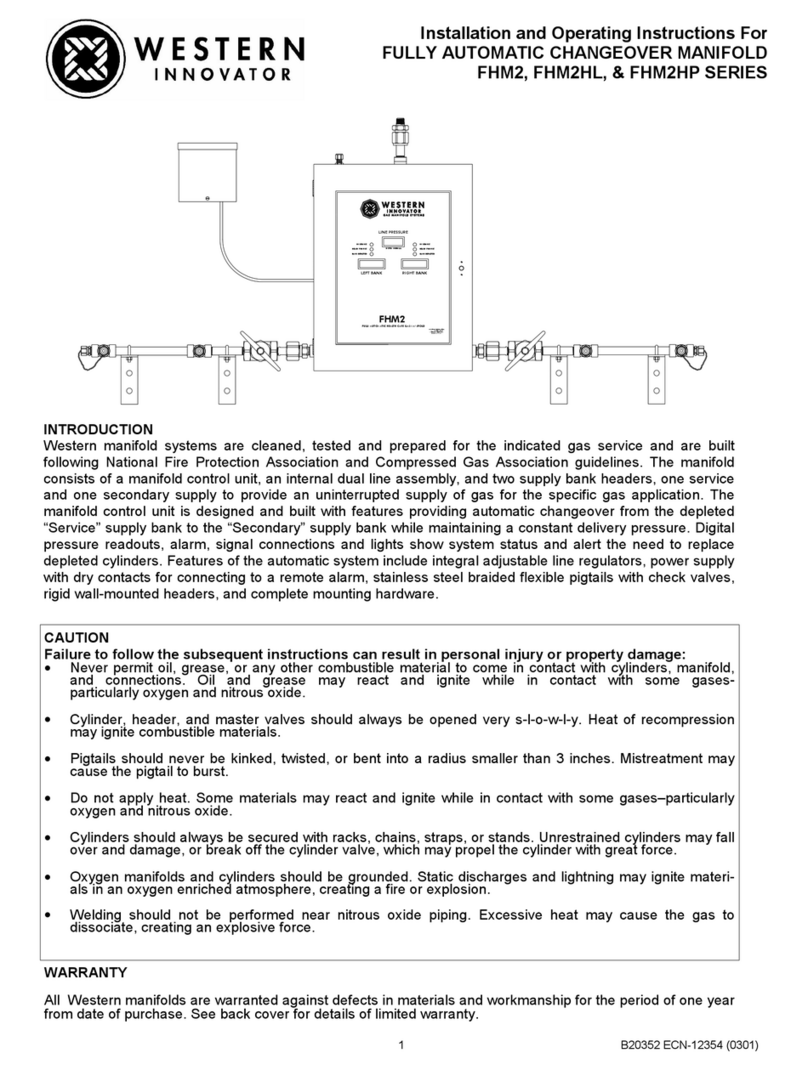
Western Innovator
Western Innovator FHM2 SERIES Installation and operating instructions

Aybey Elektronik
Aybey Elektronik AE-SMART installation manual
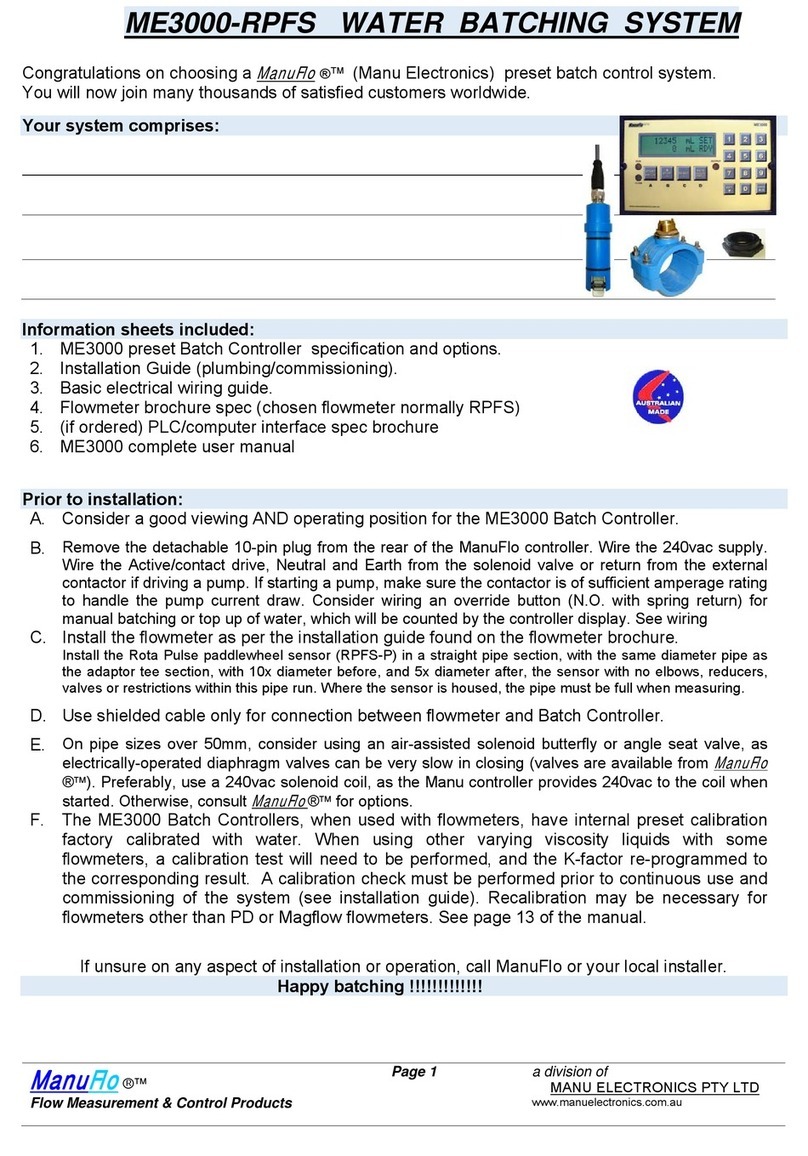
MANU ELECTRONICS
MANU ELECTRONICS ManuFlo ME3000-RPFS Information sheet
